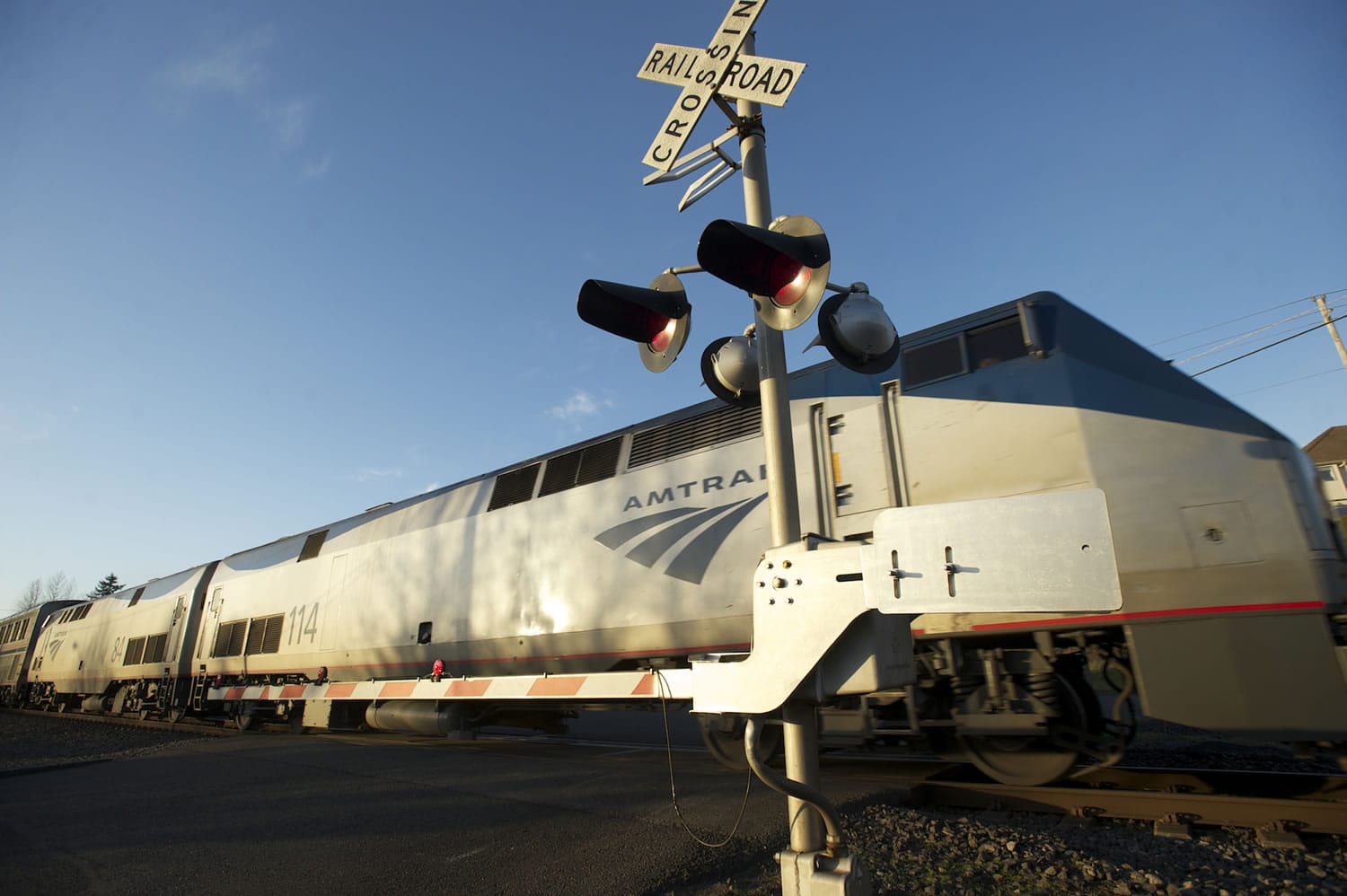Relief from train horns could be in sight for east Vancouver residents who live near the Columbia River.
The city council agreed Monday to consider an ordinance that would form a local improvement district so 467 homeowners could pay for the crossing safety upgrades necessary for establishing quiet zones at Southeast 139th, 144th, 147th and 164th avenues.
All crossings but the one on Southeast 144th Avenue are on public streets.
The idea of an LID has been around since 2005, when the Federal Railroad Administration approved the concept of quiet zones and city officials said they had no interest in paying for the safety upgrades. Details emerged earlier this year on a three-tiered system in which people who live closer to the tracks would pay the most money.
A public hearing will be 7 p.m. March 18 at City Hall, 415 W. Sixth St.
A second opportunity for residents to testify would be at an LID formation hearing, where all comments would be recorded for councilors to review. That hearing is tentatively scheduled for April 17. Councilors would then vote on the ordinance May 20.
If approved, construction could start this summer and horns could be silenced by fall. Residents would start making payments next year.
The councilors said Monday they preferred to pass an ordinance rather than take another route to forming an LID, which would require gathering signatures from 60 percent of the homeowners.
Matt Ransom, the city’s project development and policy manager, said Monday that in 2008 a citizen team developed an outreach plan and the proposal was later presented at neighborhood meetings. The city has also hired consultants to study how far the sound of train horns travel and what value a quiet zone would add to homes, Ransom said.
In surveys in 2009 and this year, 81 percent of the respondents said they favored forming an LID. More than 60 percent of people filled out the survey, he said, which counts as a high return rate.
“I feel very strongly we have a very defensible proposal,” Ransom said. He said people who sell their homes will get a higher value because of the quiet zone. To form an LID, people must be getting a greater benefit than what they will pay.
Initially, improvements were estimated to cost more than $1 million, but the city has backed away from elaborate gated crossings, Ransom said.
On Monday, Ransom told the city council that the current estimate of the project, including design work, is $818,000. He said the city could issue 20-year bonds, and homeowners could make annual payments with their property taxes or make one discounted, early lump sum payment.
The owners of 218 lots labeled “Tier 1” could pay $177 a year or an early payment of $2,475. Owners of 95 “Tier 2” lots could pay $124 a year or an early payment of $1,733. Owners of 154 “Tier 3” lots could pay $53 a year or an early payment of $743.
Reimbursement for the city’s studies will be included in the project’s cost, Ransom said.
To meet federal requirements, the crossings would be upgraded with new medians, extra lighting, signs and striping. Ransom reminded councilors that quiet zones don’t mean no horns, because engineers would still sound the horn if there was a potential danger, such as a person near the tracks or a vehicle that doesn’t look like it’s going to stop at the crossing. But it would be far better than the regular “bronkkk” sounds residents hear now, he said.
The FRA requires horns be sounded for 15 to 20 seconds before entering all public-grade crossings, but not more than one-quarter mile in advance, according to its website.
Even with the four crossings relatively close together, engineers still have to sound the horn at each one, Ransom said.



